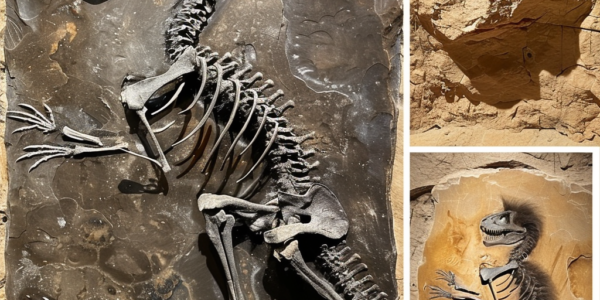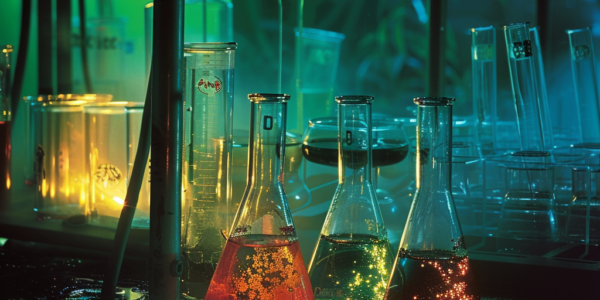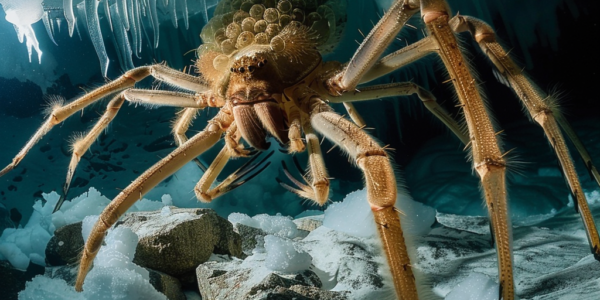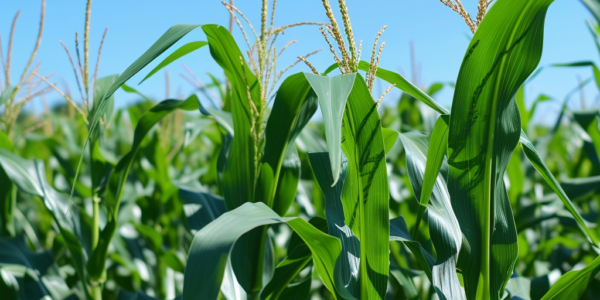Scientists Create Organized Stem Cell Culture Model Resembling Human Embryonic Brain and Spinal Cord
University of Michigan, Weizmann Institute of Science, and University of Pennsylvania engineers and biologists have created a groundbreaking stem cell culture model resembling the embryonic brain and spinal cord. This model has the potential to revolutionize the study of neurological and neuropsychiatric diseases.
Recent Discoveries Shake Up Scientific Community
Recent discovery reveals 280-million-year-old fossil thought to be one of the oldest reptiles is mostly black paint. In other news, researchers have developed a rechargeable calcium—oxygen battery and observed playful behavior in young great apes, raising questions about animal cognition and relationships.
Genomes of extremophiles contain information about their extreme environments
Organisms living in extreme environments have genomes that contain information about the type of environment they thrive in, according to research by the University of Waterloo and Western University. This discovery could lead to a better understanding of how organisms adapt to harsh conditions and potential applications in biotechnology and astrobiology.
Synthesis of Pantetheine Under Everyday Conditions Suggests Origins of Life
Researchers have synthesized pantetheine, a crucial component of acetyl coenzyme A, under everyday conditions, suggesting it could have formed naturally on early Earth. This finding could have implications for the origins of life and the synthesis of biologically crucial chemicals.
Groundbreaking Discovery: Antarctic Sea Spiders’ Unique Reproductive Habits Revealed
Researchers have made a groundbreaking discovery about the reproductive habits of giant sea spiders in Antarctica, shedding light on their unique method of reproduction. The study could have wider implications for marine life and ocean ecosystems in Antarctica and around the world, providing valuable insights into the reproductive strategies of marine life in Antarctica and offering a glimpse into the evolutionary adaptations of these fascinating creatures.
Study in Nature Reveals Genetic Determinants of Micronucleus Formation and Implications for Human Disease
A recent study published in Nature has uncovered crucial insights into genomic instability and its implications for various diseases. The research delved into the mechanisms underlying the sequestration of DNA in aberrant extranuclear structures known as micronuclei (MN), associated with genomic instability, aging, and diseases linked to DNA damage and mitotic chromosomal imbalances. The study identified 145 genes that play a significant role in either increasing or decreasing MN formation, many of which have orthologues associated with human diseases, highlighting the potential clinical relevance of the findings. The identification of Dscc1 as a gene whose loss significantly increases MN formation and the validation of the DSCC1-associated MN instability phenotype in human cells offer insights into potential therapeutic avenues for addressing genomic instability.
Ocean-Based Viruses and Climate Change
Discover how ocean-based viruses are being utilized to combat climate change by enhancing carbon capture and preventing methane release. Scientists are leveraging genomic sequencing and artificial intelligence to identify viruses integral to carbon metabolism and develop community metabolic models for improved carbon capture in the world’s oceans.
New AI Tool DeepGO-SE Promises to Unravel the Inner Workings of the Cell
A new AI tool, DeepGO-SE, developed by KAUST bioinformatics researcher Maxat Kulmanov, outperforms existing methods for forecasting protein functions and can analyze proteins with no clear matches in existing datasets. The model was ranked in the top 20 of more than 1,600 algorithms in an international competition. DeepGO-SE employs logical entailment to draw conclusions about molecular functions based on general biological principles, offering a groundbreaking approach to understanding cellular mechanisms.
Researchers Make Breakthrough in Developing Disease-Resistant Corn
University of Illinois Urbana-Champaign researchers have made significant progress in developing disease-resistant corn, a major win for growers. The study identified genomic regions associated with resistance to four major diseases, paving the way for the development of corn varieties that can combat multiple diseases simultaneously.
Volcanic Lightning’s Role in Kickstarting Life on Earth
Groundbreaking discovery suggests volcanic lightning may have played a vital role in kickstarting life on Earth. Study presents compelling evidence that ancient volcanic eruptions could have fixed substantial amounts of atmospheric nitrogen, laying the foundation for the emergence of life on our planet. Research delves into the intriguing question of how bacteria and subsequent life forms came into existence, uncovering evidence suggesting that nitrogen in the atmosphere might have been fixed by volcanic lightning interacting with ash, providing a potential mechanism for the creation of amino acids.










